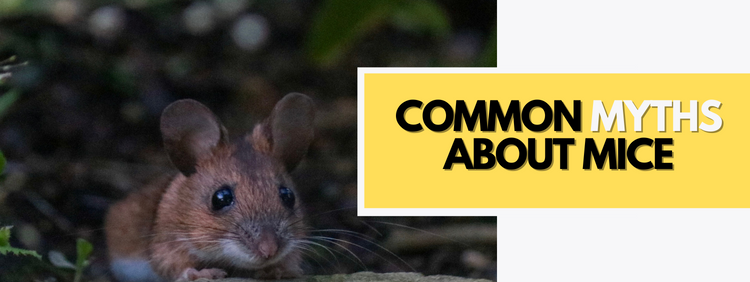4 Common Myths About Mice

Mice are small animals that pose a threat disproportionate to their size. The most effective way to get rid of them is through professional mice control. Because mice are nocturnal, people rarely get a chance to observe them in action, which leads to misunderstandings about them. The more you know about mice, the more information you can give to the mice exterminator you hire to get rid of them, who will then be able to do the job more efficiently.
Here are some common mouse myths and the truth behind each.
1. Mice Are Only Found in Dirty Places
You may think that if you keep your home meticulously clean, you’ll never have to worry about a mouse infestation or have to hire residential pest control. That is not necessarily true.
It is true that mice are attracted to cluttered areas that provide them with many places to hide. It is also true that neglected crumbs and food spills can provide them with sustenance and encourage them to stick around. If you get rid of these things, you may have a lower risk of a mouse infestation.
Nevertheless, mice may tolerate clean surroundings if a shelter provides them with the things they need, such as warmth and food. Even if your kitchen is impeccably clean, and there are no crumbs anywhere throughout the house, if you store food in the plastic bags and cardboard boxes they came in, mice can easily chew through them and have a feast in your pantry. To prevent mice from getting into your food supplies, store them in tightly sealed storage containers made of materials that mice can’t chew through easily, such as metal or glass.
2. They Can’t Swim
It is true that mice do not like to swim and try to avoid it if possible. However, they can swim if necessary. Not only that but mice can keep swimming for a long period of time. If they accidentally fall into the water, they can keep treading water for up to three days if necessary, though they will return to dry land as soon as possible.
3. They Don’t Have Bones
Because mice can squeeze through seemingly impossible small holes, some people mistakenly believe that they have no bones. However, mice are mammals and, like all other mammals, they have bony skeletons. Nevertheless, it is also true that the mouse skeleton does not have all the same bones that a human skeleton has. In particular, a mouse’s skeleton lacks a collarbone. It is partly because of this that a mouse is able to compress its bones to squeeze through tiny openings. If they can fit their heads through, the rest of the body can follow.
4. They Only Come Out at Night
It is true that mice are nocturnal, meaning that they are most active at night and mostly sleep during the day. However, it is also true that mice are opportunistic feeders with a keen sense of smell. If their nose tells them that there is food available to forage, they may wake up and come out of hiding to steal a snack.
Furthermore, “nighttime” means something different to a mouse than it does to human beings. Mice have no concept of hours or clocks. To them, there are only two different times: “day” when it is light, and “night” when it is dark. In the winter, when the number of daylight hours per 24-hour period temporarily decreases, it starts to get dark earlier. Therefore, “night” for a mouse during the winter may occur at 4:00 or 5:00 in the afternoon when humans are more likely to consider it “daytime.”
Truly Nolen offers residential pest control that is not only efficient but effective at getting rid of rodents in the long term. Learn more about our rodent control services.